
I filled the sweet ones with peaches, amaretto cookies, ricotta, cinnamon and sugar.


Cottage Cheese Wareneki (pierogi)
Dough:
½ cup (125 ml) milk (can be whole milk, 2% or skim milk)
½ cup (125 ml) whipping cream
3 large egg whites
1 tsp (5 ml) salt
3 cups (450 gm) all-purpose flour
1. Mix flour and salt, add other ingredients, and knead dough until you have a smooth dough. (I kneaded this dough quite a bit, and it yielded a nice, pliable dough).
2. On a floured surface roll out fairly thin (1/8” or about 3 millimeters), cut into 2” (5 cm) squares, and fill with 1 tsp (5ml) cottage cheese filling (see below).
Filling:
Traditional
1 lb (455 g) dry cottage cheese (this is usually found beside the “wet” cottage cheese in the supermarket’s dairy aisle. If you can’t find it, please see below for how to proceed with the “wet” cottage cheese.)
3 large egg yolks
Salt to taste
1. Mix well all the ingredients for the filling.
2. Put 1 rounded teaspoon (5 ml) of the filling in each square, fold corners to form a triangle, seal edges well using your fingers or a fork
3. Cook in salted, boiling water for 5 minutes.
Boiled pierogi can also be fried after boiling for a nice crunchy dumpling.
If you can’t find dry cottage cheese, simply drain normal cottage cheese by nesting the cottage in a few layers of cheese cloth or a fine sieve over a bowl.
Adapted from The Mennonite Cookbook
Sweet version of Warenki – cottage cheese and strawberries served with Greek yogurt
* You can very easy make a sweet version of Warenki - just add some fruits and sugar to the cheese filling and mix well together (strawberries or blueberries are great idea!).
Russian style pierogi (makes 4 generous servings, around 30 dumplings)
(Traditional Polish recipe, although each family will have their own version, this is Anula's family recipe)
Dough:
2 to 2 1/2 cups (300 to 375 g) all-purpose (plain) flour
1 large egg
1 teaspoon (5 ml) salt
About 1 cup (250 ml) lukewarm water
Filling:
3 big potatoes, cooked & mashed (1 1/2 cup instant or leftover mashed potatoes is fine too)
1 cup (225 g) cottage cheese, drained
1 onion, diced & sauteed in butter until clear
3 slices of streaky bacon, diced and fried till crispy (you can add more bacon if you like or omit that part completely if you’re vegetarian)
1 egg yolk (from medium egg)
1 tablespoon (15 g) butter, melted
1/4 (1.25 ml) teaspoon salt
pinch of pepper to taste
1. Combine all the ingredients for the filling (it’s best to use one’s hands to do that) put into the bowl, cover and set aside in the fridge until you have to use it.
2. Place 2 cups flour in a large bowl or on a work surface and make a well in the center. Break the egg into it, add the salt and a little lukewarm at a time (in my situation 1/2 cup was enough). Bring the dough together, kneading well and adding more flour or water as necessary. Cover the dough with a bowl or towel. You’re aiming for soft dough. Let it rest 20 minutes.
3. On a floured work surface, roll the dough out thinly (1/8” or about 3 millimeters) cut with a 2-inch (5 cm) round or glass (personally I used 4-inch/10 cm cutter as it makes nice size pierogi - this way I got around 30 of them and 1 full, heaped teaspoon of filling is perfect for that size). Spoon a portion (teaspoon will be the best) of the filling into the middle of each circle. Fold dough in half and pinch edges together. Gather scraps, re-roll and fill. Repeat with remaining dough.
Pierogi made using the form
Pierogi made by hand
4. Bring a large, low saucepan of salted water to boil. Drop in the pierogi, not too many, only single layer in the pan! Return to the boil and reduce heat. When the pierogi rise to the surface, continue to simmer a few minutes more ( usually about 5 minutes). Remove one dumpling with a slotted spoon and taste if ready. When satisfied, remove remaining pierogi from the water.
5. Serve immediately preferably with creme fraiche or fry. Cold pierogi can be fried. Boiled Russian pierogi can be easily frozen and boiled taken out straight from the freezer.
Other types of fillings:
Potato and cheese
4 – 5 boiled potatoes
4 table spoons butter (60 g) or olive oil (60 ml)
50 ml (3 tablespoons + 1 teaspoon) milk
1 egg white (from medium egg)
about 120 ml (½ cup) farmers’ cheese (any unripened cheese like Indian Paneer)
salt and pepper
Meat and cabbage
200 g (7 oz) cooked meat (minced or cut very finely)
500 g white cabbage (chopped and simmered in a little bit of water, until soft)
1 onion (diced and fried)
1 whole medium egg
1 tablespoon (15g) butter
dry breadcrumbs (add as much to hold the filling together, about 2 tablespoons)
salt and pepper
Soy bean filling
350 g soy beans (canned, drained and minced)
2 medium eggs
1 onion (diced and fired)
100 g (2/3 cup) dry breadcrumbs
salt and pepper
Sauerkraut filling
2 cups (500 g) sauerkraut
1 big carrot, grated
1 shallot, chopped and fried with a tablespoon of butter
few (about 3) wild mushrooms (I used dry ones, you can use fresh but chop them and fry on some butter before adding to the sauerkraut cabbage)
salt, pepper and cumin
- Saute all the ingredients together until soft, cool before filling pierogi.























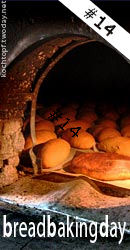
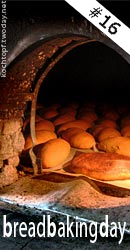
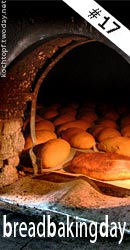
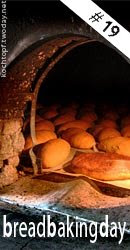


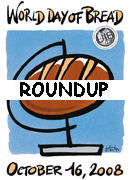
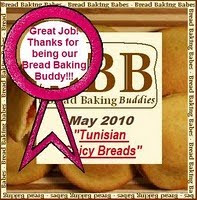










.jpg)











































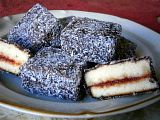













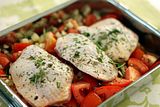
.jpg)

























